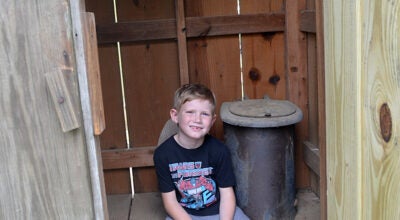Cash for Clunkers see $2B boost
Published 8:52 pm Friday, July 31, 2009
In less than a week, $1 billion has been drained from the government-funded Car Allowance Rebate System or “cash for clunkers” car purchase program. On Friday, the House voted to pour an additional $2 billion into the clunker program. And, if the Senate votes “yea” on Monday, car dealerships may need revolving doors as clunker owners make a mad rush to get a piece of the pie.
The “cash for clunkers” programs offers owners of old cars and trucks $3,500 to $4,500 toward a new, more efficient vehicle in exchange for scrapping their old vehicle.
Jim Jackson, of Bill Jackson Chevrolet in Troy, said the car purchase program has value to car dealerships, those who own gas guzzling clunkers and the country.
The program boosted US auto sales in July to the highest level of 2009 and the additional $2 billion could and should do the same for August.
Jackson said the “cash for clunkers” is a trade-in program and eligible vehicles must get combined city and highway fuel economy ratings of 18 miles per gallon or less.
“The car that is traded must be in drivable condition,” he said. “The vehicle must have a current tag, a clear title and the owner of the car must have owned it for at least one year, and it must have been continually insured for at least a year. And the clunker must be traded for a new car.”
Jackson said the program aims at helping the struggling auto industry by taking inefficient cars off the raod and spurring new sales.
“Already 250,000 gas guzzlers have been taken off the road through this program,” he said. “When we make a ‘cash for clunkers” trade, we have to drain the gas and antifreeze and put in a sulfur mixture and run the car until the motor locks up. Then, we have to haul it to Jerry Spurlock and have it crushed.”
With that many gas guzzlers put out to pasture and twice that many more taken off the roads if the Senate votes additional funding for the program, the environment will be all the better for it.
Jackson said there are vehicle owners in and around Pike County who can benefit from the car purchase program.
“Thursday, we had a guy who came in and traded a 1990 four-wheel drive pickup with a 13mph gas rating for a 2009 Silverado,” Jackson said. “There will be some good trades made.”
Duane Webb, of Troy Nissan, said, as of Friday, the Nissan dealership has sold two vehicles off the program.
“It’s a good program, and it’s got people coming in the showroom and got people kicking tires again,” Webb said. “But like any government program, it’s a nightmare to administer. And, it’s the dealers that are taking a chance on this. Right now, we’ve put out the money, and we can’t even get to the Web site to get approval. It’s locked up. I feel like we’ll get our money, but I don’t know when.”
Webb said anyone who has an old clunker sitting around and wants to buy a new car could benefit from the program.
“The sad thing is that some people have old vehicles that are just used around the farm. They could really benefit from the program but won’t be able to because the vehicles don’t have a current tag and aren’t insured,” he said. “But those who have old clunkers that qualify and are looking for something new can get a good deal. The old vehicle might not be worth a thousand dollars, and they can get from $3,500 to $4,500 for it. That’s a good deal.”
Ray O’Brien, Ken Cox Ford, said, too, that the program is a good one and is bringing people into the dealership.
“It’s a trade-in program, and the amount that a buyer can get depends on the mileage,” he said.
“If the new car being purchased gets 10 miles per gallon more than the one being traded, then the owner will get $4,500 trade-in value. If the new car being purchased gets between four and nine miles per gallon more, the trade value will be $3,500.”
Those who want to know whether their vehicles qualify for the “cash for clunkers” program can go to the government’s official CARS.gov Web site and click on fuel.economy.gov, and it will walk them right through the process.




